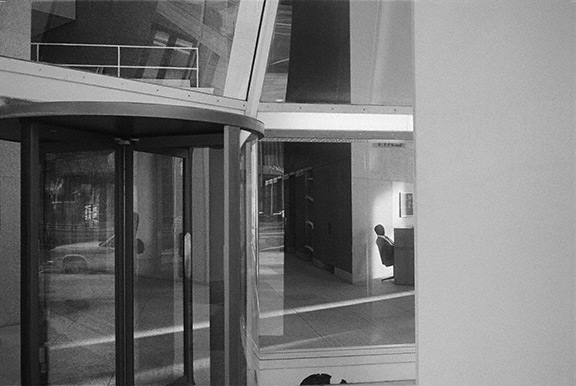Camera Time & Memory
The camera, by its mechanical nature, can only capture the present, as it passes its prodigy into memory. Photographs at their moment of creation then, can only describe the past, and have no apparatus to explain the future. Only by looking at photographs in their special relationship with our memory can we understand the meaning of time in a photograph.
“The aperture of a camera forms a two-way portal through which both subject and viewer peer into another time. The subject, conscious of the permanence of the document, posts forward a memory. The viewer, aligning with the memory at some later date, works to preserve the sight from disintegration. Both are present at both moments; both experience the revelation of being adrift in time, sampling it laterally.” -Richard Powers, ”Three Farmers on Their Way to a Dance”

Financial District, Chicago, Illinois, 1981, Craig Carlson
Richard Powers observation of camera time and memory came from a personal experience, where one day he drifted into a gallery which was exhibiting photographs by photographer August Sander. His book title, “Three Farmers on Their Way to a Dance,” came from the title of August Sanders‘s 1914 photograph which he saw that day as he turned left into the gallery at the Detroit Institute of the Arts. Powers gallery experience of August Sanders photograph posted forwarded a memory of the dance the three farmers were actually headed toward, which was World War I.
Photographs are portals through which time is frozen into a two-way mirror. Neither vantage point can explain the present, all we have to understand photography are our memories.
©Copyright Craig Carlson 2012 All Rights Reserved
